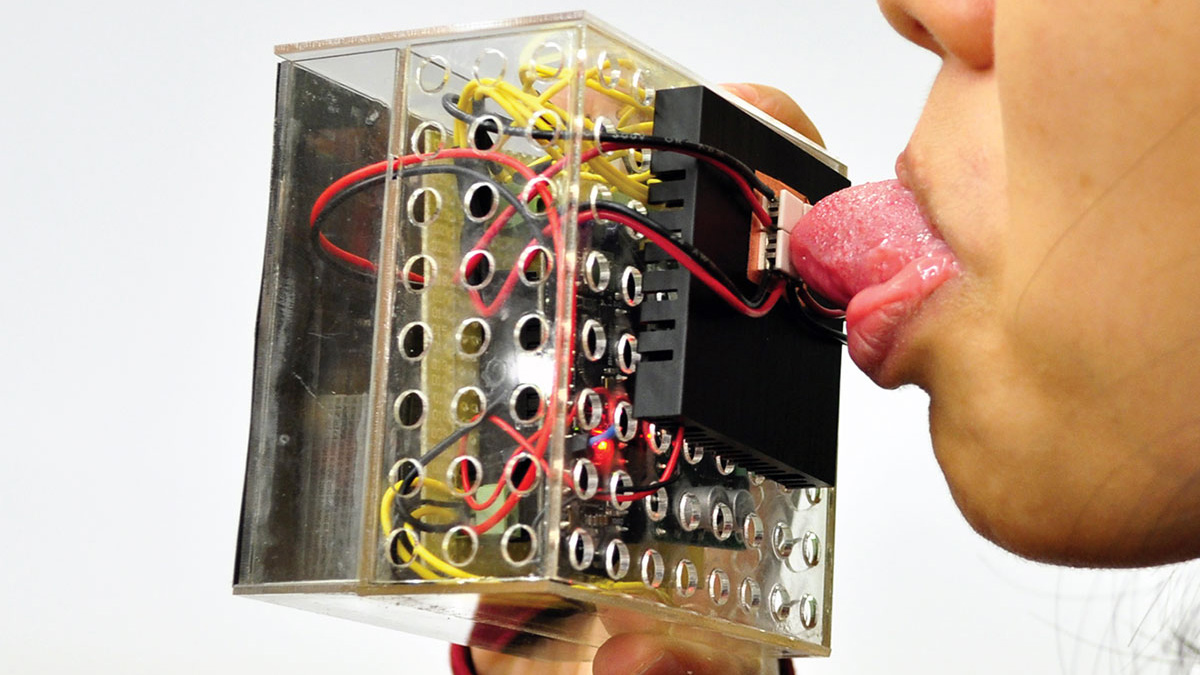'Virtual food' becomes a possibility with this taste simulation system
It's on the tip of my tongue

With sight, sound, smell and touch now digitised, only one human sense remains for computers to conquer - taste. Now researchers at the University of Singapore have developed technology that takes us closer.
Nimesha Ranasinghe and Ellen Yi-Luen Do have put together a system that uses temperature to mimic the effects of sweetness and spiciness. By placing a small device on the tip of the tongue they were able to convince people that they were tasting things they weren't.
It works thanks to thermally-sensitive neurons in the tongue that contribute to the sense of taste. A set of thermoelectric elements which are rapidly cooled and heated stimulate those neurons, fooling them into thinking a taste is present.
In preliminary trials, about half the participants reported a sensation of sourness and/or saltiness when the device was cooled to about 18C, and a sensation of sweetness when it was warmed again to about 35C.
Virtual Food
The discovery is just the latest in a long string of taste simulation experiments that Ranasinghe has performed. Previously, he's developed a "digital lollipop" that can emulate some tastes, as well as a spoon that uses electrodes to amplify the salty, sour and bitter flavours of food.
Ultimately, it's hoped that such devices could be combined into a system that could simulate "virtual food" in digital environments, as well as improve the eating experience in the real world.
To that end, a Singapore hospital is planning a long-term study using the spoons to reduce salt intake in older patients whose sense of taste has been impaired with age. By doing so, it's hoped that high blood pressure and other health issues can be avoided.
Get daily insight, inspiration and deals in your inbox
Sign up for breaking news, reviews, opinion, top tech deals, and more.
The full details of the thermoelectric system and how it works were published in the journal Nature.
